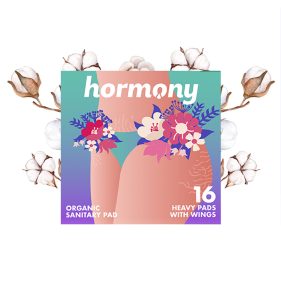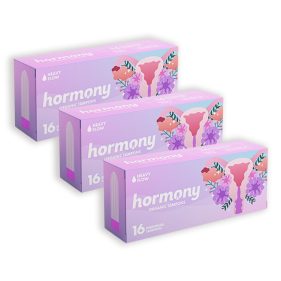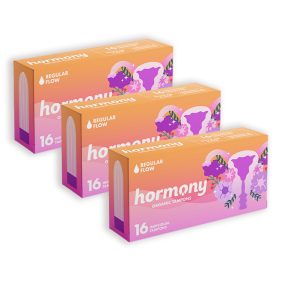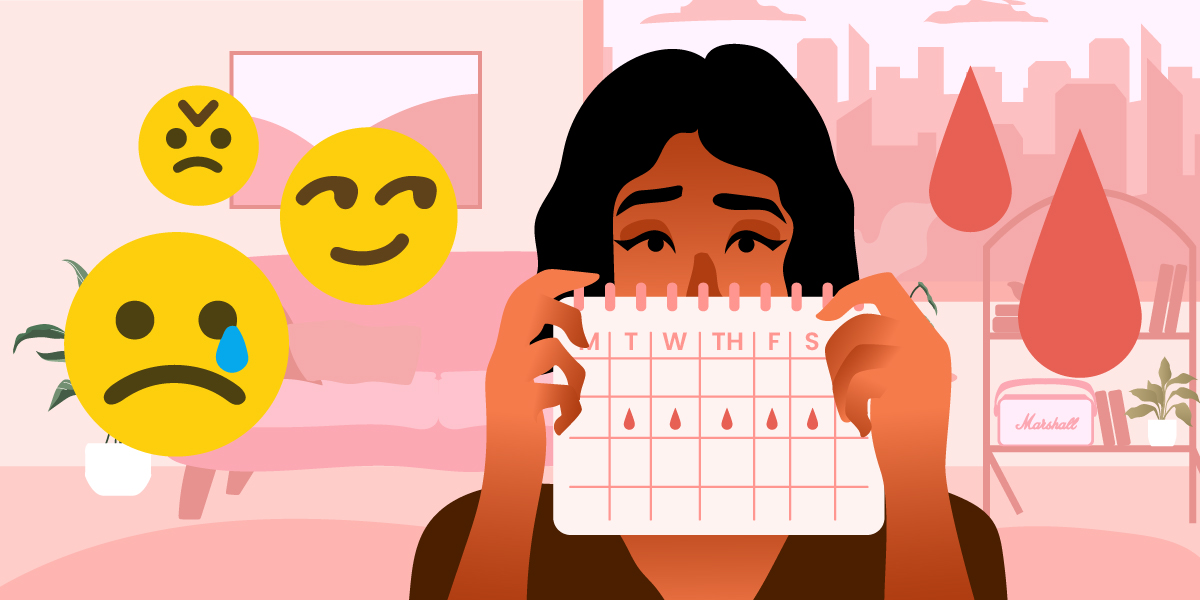
For today’s guide, we will be discussing the four main phases of the menstrual cycle. By the end of this article, you’ll learn about the phases and the symptoms you’ll feel during each phase.
We get that some of you might find this information unnecessary, and it’s normal to feel that way. Due to the routine nature of the monthly period, it’s easy to become complacent when tracking it. You feel like it just comes and goes, and that if there’s a change in the cycle, you just don’t do anything about it and just wait for another month, hoping everything will get back to normal. Now’s the time to ditch that mindset.
But before we talk about the reasons why you should learn about your menstrual cycle phases, let’s have a quick refresher about the menstrual cycle first.
What is the Menstrual Cycle?
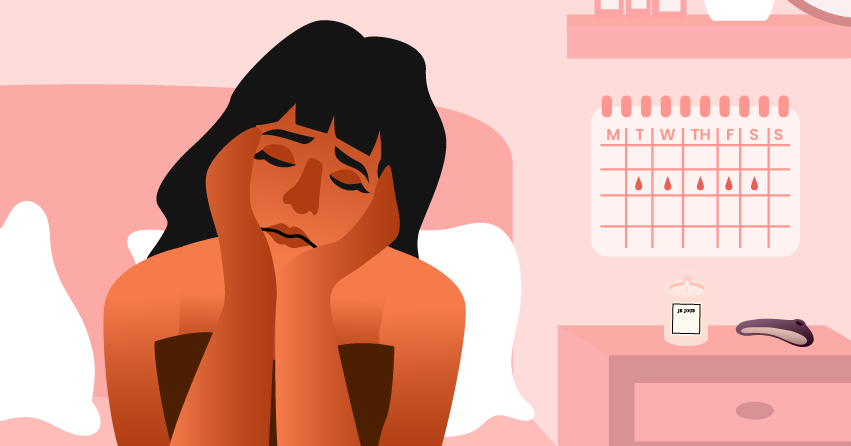
The menstrual cycle is a monthly cycle of changes in the female body, during the years of puberty up to menopause, in preparation for the possibility of pregnancy. Every month, ovulation will take place– wherein the egg gets released from the ovaries. It then travels through a thin tube, called the fallopian tube, to the uterus.
While ovulation is happening, your hormones are having some changes to prepare your uterus for pregnancy. The lining on the uterus becomes thicker to prepare for possible fertilization– the process where the sperm meets the egg cell.
If the ovulation has taken place and the egg isn’t fertilized, the thick uterus lining breaks down and bleeds. It will then start flowing out of your vagina– this process is called menstruation. After this, the cycle starts again.
The menstrual cycle is usually 28 days long, but it varies per individual. As long as your period comes up every 24 to 38 days, it’s still considered a “regular” cycle. If your cycle length doesn’t fall on the 24 to 38 days, it’s considered an “irregular” cycle– consult your healthcare provider immediately if you’re experiencing this.
Why You Should Learn About Menstrual Cycle Phases
Knowing how the menstrual cycle works is knowing how your body works. It has numerous benefits, especially for those planning their pregnancy. Below are some reasons you should learn and track your cycle.
1You can gain fertility awareness.

Fertility awareness is necessary for couples trying to get pregnant or women who don’t want to get pregnant yet. Knowing what days to note and symptoms to check, you can determine when your most fertile days are. You can then have more intercourse or abstain and use contraceptives, depending on your family planning goals.
However, remember that these phases can still be unpredictable, even if your periods are usually regular.
2It can help with predicting certain menstrual symptoms.
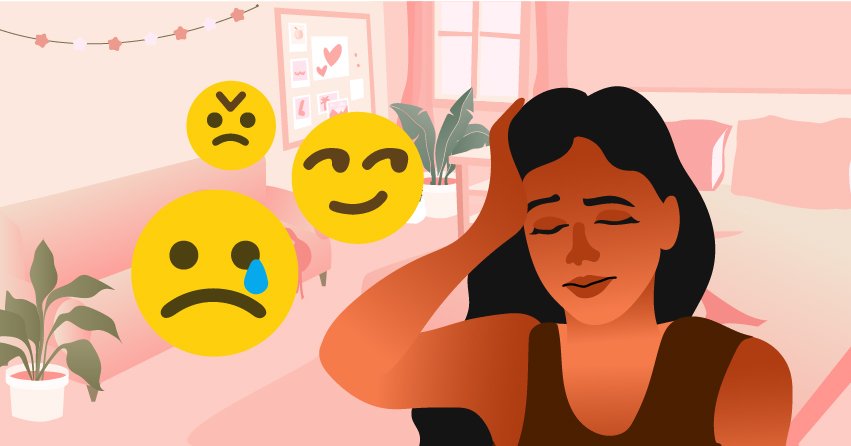
Another great thing about learning the menstrual cycle phases is you’ll get to plan your self-care routine around it. For instance, if you know when your post-ovulation begins, you can opt for less intense workout sessions, while you can go all out on days of high energy. It can also help you navigate and regulate your “more emotional” days since you know it’s due to your hormones.
3It can help you discover underlying conditions.

Irregularities in your cycle could signify hormonal imbalances or conditions like polycystic ovary syndrome. By monitoring your menstrual phases, you provide essential information to healthcare professionals, which could help when diagnosing certain conditons.
Phases of the Menstrual Cycle
Before we discuss the menstrual cycle phases, it’s important to note that the uterus and ovaries have different phases. Though they’re working together to prepare your body for a potential pregnancy, they’re experiencing distinct changes in each phase.
They both have three phases. There are follicular, ovation, and luteal phases in the ovarian cycle. Meanwhile, the uterus undergoes Menstruation, Proliferative, and Secretory phases.
To help you follow through each phase, we’ll combine the phases into three stages: pre-ovulation, ovulation, and post-ovulation.
1Pre-Ovulation

When Does This Stage Occur?
From the first day of your period until the middle of your menstrual cycle.
Uterus: Menstruation & Proliferative Phase
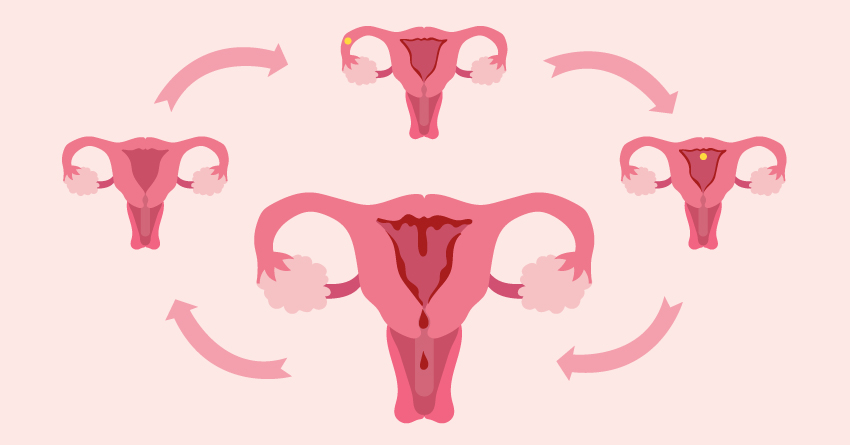
The first phase of the cycle starts when the egg from your previous cycle isn’t fertilized. As your body goes through this stage, your progesterone and estrogen hormone levels will drop, and the thickened lining of your uterus will shed, causing vaginal bleeding.
Once your period ends, it’ll start building a fresh, thick inner lining, providing a hospitable environment in anticipation of a fertilized egg ready to implant and begin its growth.
Ovaries: Follicular Phase
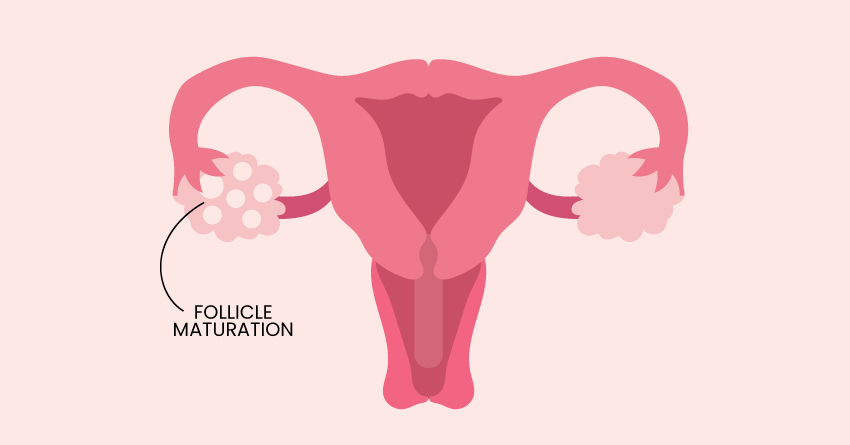
While the uterus is busy shedding and creating a new inner thick lining for a potential fertilized egg, your ovaries undergo the Follicular Phase. Your hypothalamus, a small brain region responsible for regulating sleep, hormones, and emotions, will signal your pituitary gland to release follicle-stimulating hormone (FSH).
After its release, the FSH will signal the ovaries to prepare an egg for ovulation. The ovaries will then produce around 5 to 30 small sacs called follicles, all containing an immature egg. As the cycle progresses, only the follicle with the healthiest egg will stay, while the other follicles will be reabsorbed into the body.
Symptoms
You’ll experience vaginal bleeding, pelvic cramps, bloating, and mood swings. It’s also possible to experience food cravings, fatigue, and headaches during this stage.
2Ovulation

When Does This Stage Occur?
Midway through the cycle– 13 to 15 days before the start of the next menstruation. It lasts for 24 hours.
Ovaries: Ovulation Phase
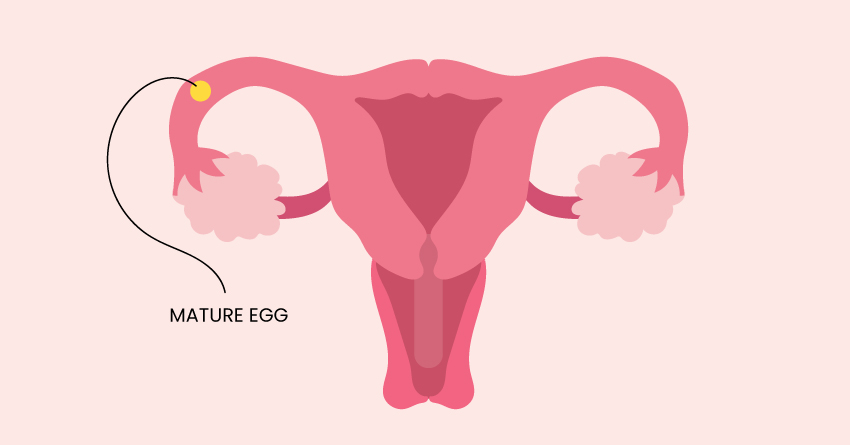
In this phase, your ovary will release a mature egg. This mature egg will travel through the fallopian tube towards the uterus. Unlike the other phases of the menstrual cycle, this is the only stage in the cycle that you can get pregnant. You will be fertile throughout this period. If you don’t want to get pregnant, it’s better to hold off on intercourse or use contraceptives.
Symptoms
You may experience increased libido, heightened senses, mild pelvic pain, breast tenderness, and clear and stretchy cervical mucus.
3Post-Ovulation

When Does This Stage Occur?
After ovulation or menstrual bleeding, it lasts for 9-16 days until the start of the next period.
Uterus: Secretory Phase
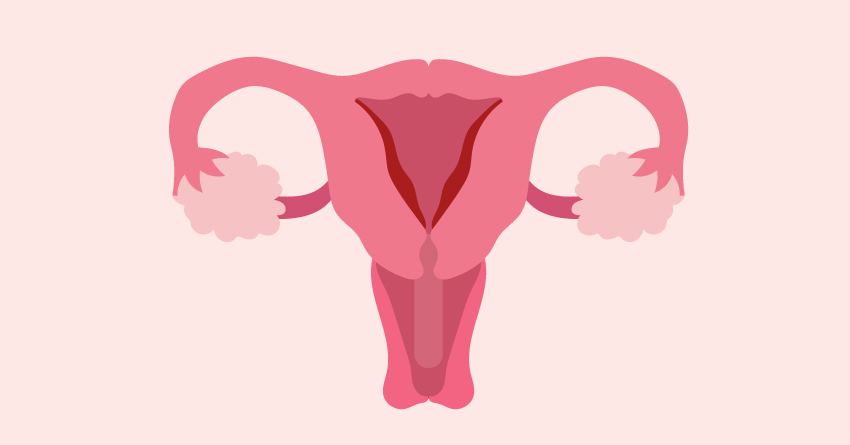
The uterine lining readies itself to nurture a potential pregnancy or shed for menstruation. Rising progesterone levels signal the lining to stop thickening, preparing for the potential arrival of a fertilized egg.
Specifically, prostaglandins, including ‘Prostaglandin F2alpha’ and ‘Prostaglandin E2’, trigger contractions in the uterine muscles. These contractions lead to cramping, causing blood vessels to constrict and the uterine lining to break down.
Ovary: Luteal Phase
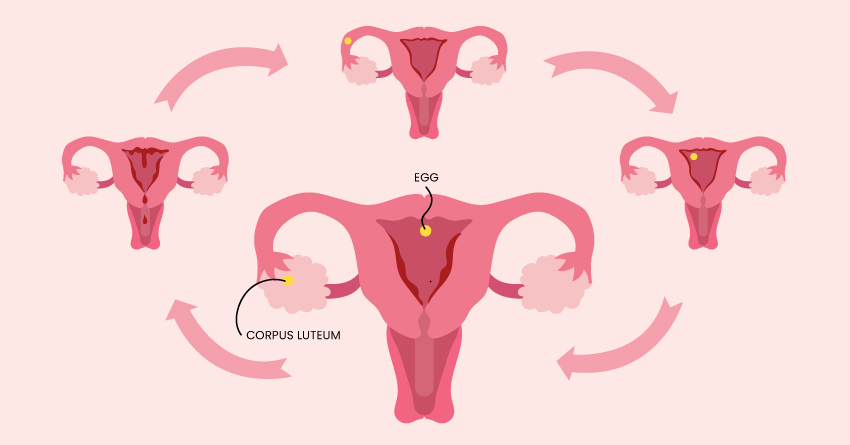
The follicle that contains the mature egg turns into a corpus luteum. It’s a mass of cells that releases progesterone, keeping the uterine wall thick and ready for fertilization.
If fertilization occurs, the body will produce human chorionic gonadotropin (hCG) to support the early stages of pregnancy, keeping the uterine lining thick enough for the fertilized egg. Progesterone from the corpus luteum also supports the early stages of pregnancy, ensuring the lining is enough for the egg to turn into an embryo.
On the other hand, if the egg hasn’t been fertilized, the corpus luteum will break down and dissolve into the body. The estrogen and progesterone levels will then drop, marking the start of the cycle.
Symptoms
You may experience premenstrual syndrome (PMS) symptoms, such as bloating, breast tenderness, libido changes, food cravings, mood swings, and headaches. Now, if you’re pregnant, you may experience implantation bleeding, cramping, nausea with or without vomiting, tiredness, bloating, frequent urination, mood swings, heightened sense of smell, and headaches.
How to Track Your Menstrual Cycle
As you’ve learned about the phases of the menstrual cycle, we hope that you’ll be motivated to track your period cycle. With that, here are the suggested steps in tracking your monthly cycle.
1Keep a journal to track your monthly cycles.

For starters, get a journal and use that as a period tracker. Write down all the data points that you need to jot down every month, such as the following:
- First and last day of the cycle
- Heaviness of the menstruation flow per day
- Changes in mood during the month
- Energy levels
- Basal body temperature
By having this period tracking notebook, you’ll be able to assess if there’s something amiss with your period. This can also serve as a backup data if you’re using a period tracker app.
-
Original price was: ₱420.00.₱378.00Current price is: ₱378.00.
-
Original price was: ₱360.00.₱324.00Current price is: ₱324.00.
-
Original price was: ₱630.00.₱567.00Current price is: ₱567.00.
-
Original price was: ₱480.00.₱432.00Current price is: ₱432.00.
2Install a period tracking and ovulation app.
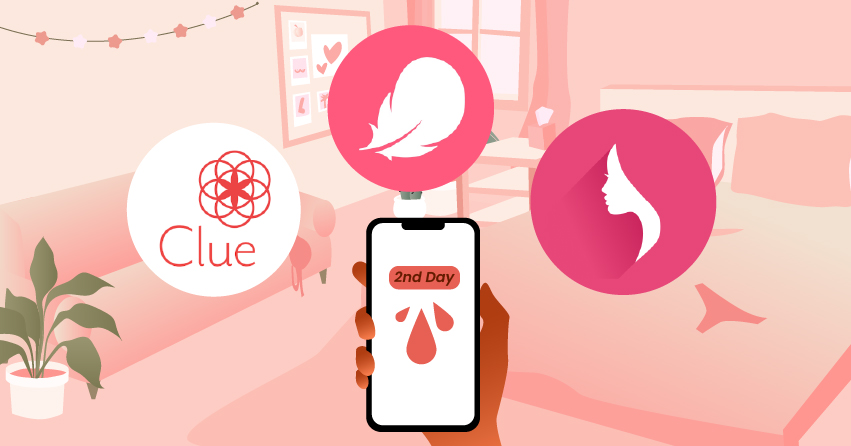
Thanks to technology, keeping track of your menstrual cycle isn’t as tedious as before. For those who wouldn’t want to track the phases of their menstrual cycle solely on their journal, you can opt for a period tracker app. Most of these apps can track your cycles, predict your fertile and infertile days (based on given data), and even provide customized tips on how to deal with menstrual symptoms. Here are some app suggestions:
Clue – It’s hailed as one of the best fertility apps by Healthline, an established website for health information. Built by a female-led team, this app knows the core of your needs when it comes to your cycle. It tracks the phases of your menstrual cycle, predicts your upcoming menstruation, tracks your ovulation days, predicts your ovulation, and predict your recurring premenstrual symptoms. You can also track your pregnancy through this nifty app.
My Calendar: Period Tracker – This app has a stunning minimalistic design that lets you take a quick glance at your previous and upcoming cycles. Whether you’re concerned about your period, birth control, conception, and pregnancy, you can surely count on this period calendar.
Period Calendar – This data-driven app can easily track the phases of your menstrual cycle and predict your upcoming periods. Aside from that, you can also add notes to track your doctor’s appointments, medications, birth control, and other health-related concerns.
3Talk to your OB-Gyne about your menstrual cycle.

Aside from tracking your cycles, it’s also essential to talk to your healthcare provider about the phases of your menstrual cycle. Consult about your symptoms and let them know if you feel something’s amiss. You might not realize it, but having changes in your monthly period can be a warning sign of a health issue.
Common Menstrual Complications & Causes
After learning about the phases of the menstrual cycle and period tracking, you’ve probably noticed some irregularities in your period. It could be as subtle as mild menstrual cramps up to as severe as prolonged heavy bleeding. Below are some of the common menstrual complications.
This section shouldn’t be used to self-diagnose. If you’re experiencing any of the symptoms mentioned in this section, especially the ones after the first point, consult your healthcare provider immediately.
1You experience Premenstrual Syndrome (PMS) symptoms.

You or some of your menstruating friends probably have this condition, as Premenstrual Syndrome (PMS) has a global prevalence of 47.8 percent.
PMS (premenstrual syndrome) is a group of symptoms that menstruators may feel a few days or weeks before their flow. It includes bloating, tummy pain, fatigue, sleep issues, changes in libido, extreme food cravings, lower abdomen cramping or pain, spotty skin, and other related symptoms.
The symptoms may range from mild to severe discomfort, so severe that some menstruators can’t even do their daily tasks properly due to the unbearable symptoms.
2Your periods are irregular.

Do you get your periods regularly, or does it change from time to time? Do you keep missing your periods in a row, then it returns out of nowhere? Irregular periods occur when the cycle is 24 days or shorter or if it’s longer than 35 days. There are different causes for this condition. It could be as simple as stress to as complicated as uterine fibroids. If you’ve kept having irregular periods, consult your healthcare provider immediately.
-
Original price was: ₱1,050.00.₱945.00Current price is: ₱945.00.
-
Original price was: ₱420.00.₱378.00Current price is: ₱378.00.
-
Original price was: ₱260.00.₱234.00Current price is: ₱234.00.
-
Original price was: ₱280.00.₱252.00Current price is: ₱252.00.
3You feel pain during your period.
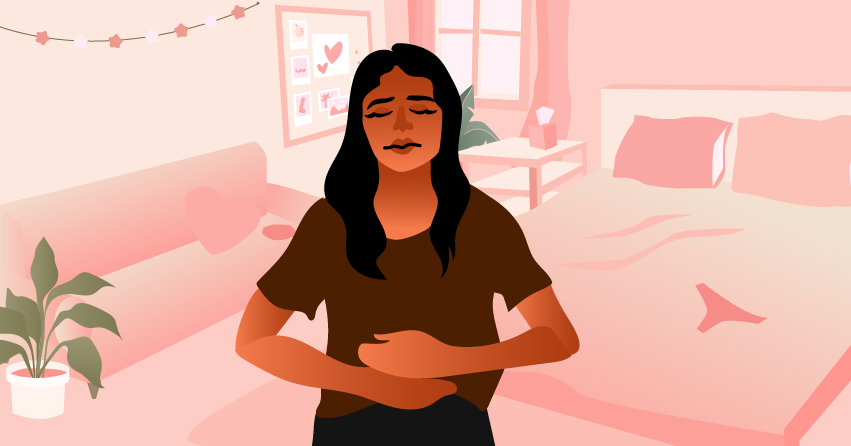
Do you ever feel pain in your lower abdomen during your period? This condition is called Dysmenorrhoea and comes in two types.
First is the primary type, in which the person has always felt pain since they started menstruating. It’s not caused by other conditions. The pain is usually felt in the tummy or lower back. It can also accompany other symptoms like headaches, mood changes, bloating, and fatigue.
Then there’s the secondary type, in which the menstruator starts having painful periods a few months or years after having their first period. This can be associated with other health conditions, such as endometriosis. As for the pain, it’s pretty much similar to the primary type; you’ll feel pain or cramping in the tummy or lower back. The difference is that the severity of pain changes from time to time. There are months when you’ll feel a dull ache, while you may feel severe cramping at other times.
4Your flow is extremely heavy and lasts more than seven days.
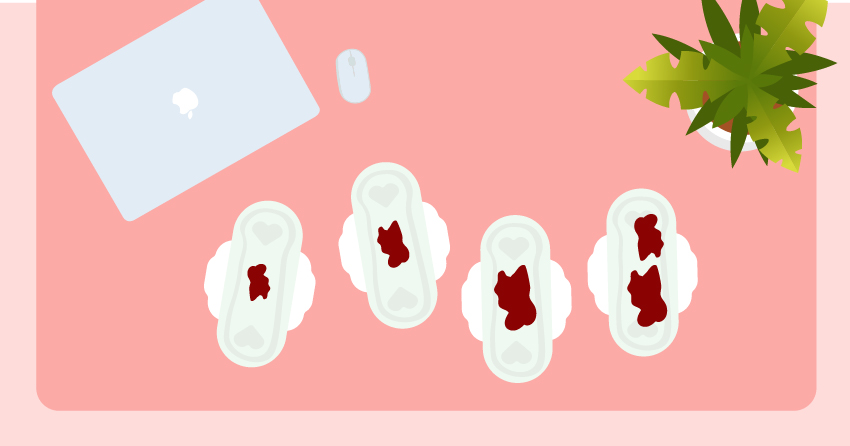
Do you experience extremely heavy periods? Does your flow last more than a week? Does the heavy flow disrupt your daily routine?
You may have Menorrhagia, a condition where the menstruator has an abnormally heavy or prolonged period. Same with the other complications on this list, it’s best to consult your healthcare provider to find the root cause of your condition and have you get it treated or managed.
-
Original price was: ₱840.00.₱756.00Current price is: ₱756.00.
-
Original price was: ₱495.00.₱445.50Current price is: ₱445.50.
-
Original price was: ₱885.00.₱796.50Current price is: ₱796.50.
-
Original price was: ₱585.00.₱526.50Current price is: ₱526.50.
5You never menstruated or stopped having it.
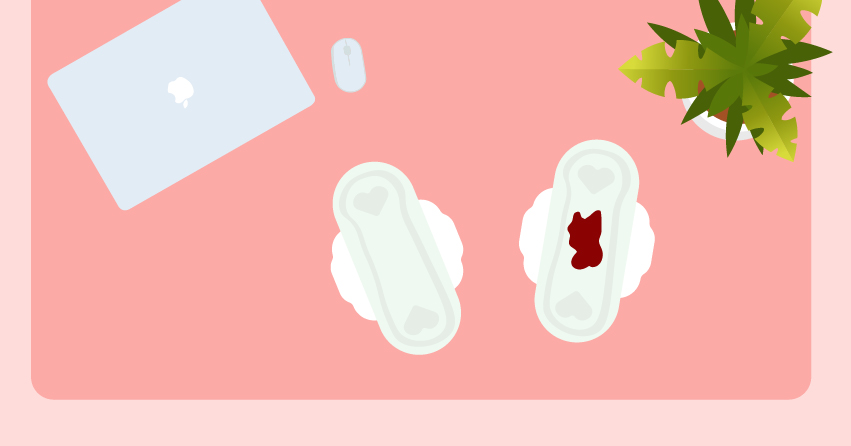
If you never had a period or stopped having it (without factors such as birth control, menopause, or pregnancy), then you may have Amenorrhoea.
It comes in two types. First is the primary Amenorrhoea. It occurs if the person’s period never occurred after reaching 14 years old and there are signs of puberty, or if they turned 16 and undergone puberty but no periods.
Meanwhile, secondary Amenorrhoea is when the menstruator stops having periods after 3 months.
By having this condition, there may be irregularities occurring during the phases of your menstrual cycle. That said, consult your doctor to find the cause and get treatment.
Frequently Asked Questions

As you’ve reached the end of this guide, you’re now equipped with all the needed information about the phases of the menstrual cycle. But if you still have other inquiries about periods, we’ve answered some of the frequently asked questions below.
1Does having irregular periods make it harder for me to get pregnant?
A person with irregular periods can still ovulate. You’ll still get pregnant, though you may have difficulty in predicting when your ovulation is. That’s a disadvantage for couples who are trying to get pregnant.
Also, if the condition causing irregular periods is linked to infertility or difficulty in pregnancy, consult a specialist to figure out how to keep your chances high.
2Does having period sex lessens my chances of getting pregnant?
The “you can’t get pregnant on your period” is a myth. Though there’s less risk of unintended pregnancies during period sex, pregnancy can occur, especially if your ovulation is closer to your period. Note also that sperm can live 3-5 days inside you, so if you had intercourse 3-5 days before ovulation, you might still get pregnant.
3What would happen if I didn’t treat my menstrual irregularities?
When you experience menstrual issues, there’s usually an underlying condition that’s causing that to happen. The condition may go from mild to severe if you leave it untreated. It can cause further issues, such as difficulty getting pregnant or extremely painful cramps.
4Is menstrual blood toxic?
One of the common misconceptions about menstruation is that period blood is “dirty.” Menstrual blood is simply a mixture of blood, tissue, and vaginal secretions.
5What’s the best menstrual product?
It depends on your preferences, but we recommend reusable and organic products, such as organic pads, organic tampons, menstrual cups, menstrual discs, and period panties. These products are more affordable (when used in the long run) and help save the planet.
Takeaway
Keeping track of the phases of your menstrual cycle is a way to keep your health and wellness in check. Assessing your monthly cycles will help you make informed decisions regarding your body.
With that, knowledge is the key! By learning about these various topics about female health, such as this article, you’ve just gained a step forward in improving your wellness. Let’s all strive to be proactive when it comes to our health!



